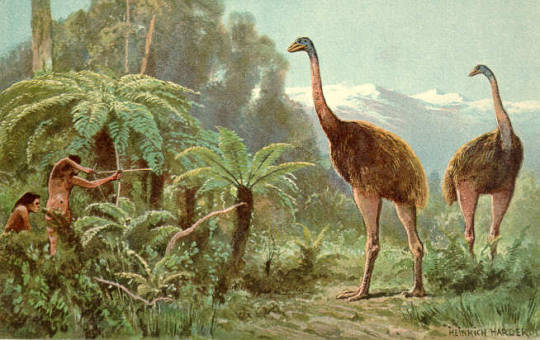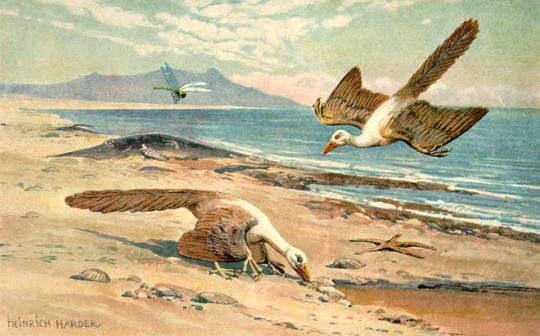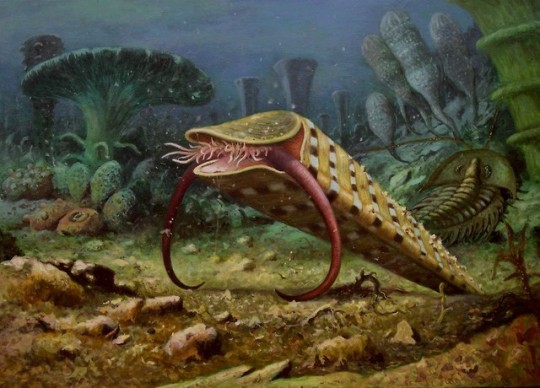Text
Prehistoric stone engraved with horses found in France
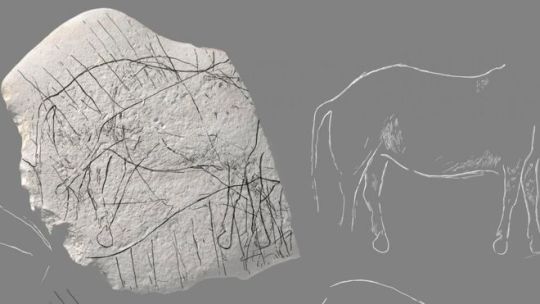
A stone believed to be about 12,000 years old and engraved with what appears to be a horse and other animals has been discovered in France.
The prehistoric find by archaeologists excavating a site in the south-western Angoulême district, north of Bordeaux, has been described as “exceptional”.
Markings appear on both sides of the sandstone, the National Archaeological Research Institute (Inrap) said.
It was found during work at an “ancient hunting site” near Angoulême station.
The Palaeolithic stone plate, which is said to be about 25cm long, 18cm wide and 3cm thick, “combines geometric and figurative motifs”, Inrap said.
According to the institute, the most visible engraving is that of a headless horse, which covers at least half of the stone’s surface on one side. Read more.
436 notes
·
View notes
Photo

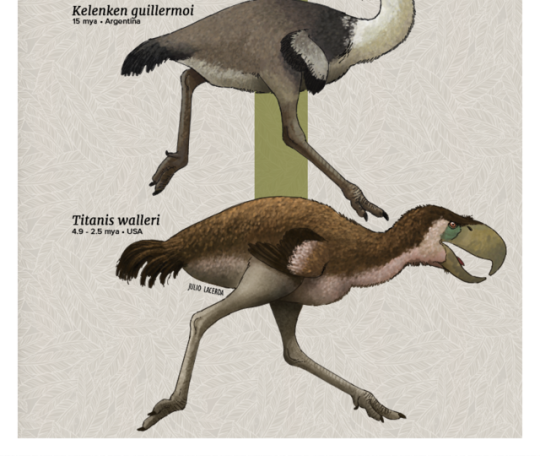
Evolution Series: The Feathered Terrorists
The so-called Terror Birds did justice to their Mesozoic ancestors, taking the role of apex predators for millions of years in South America - some even made the trek north, reaching as far as Florida and Texas before dying out.
*The animals represented here are not to scale and don’t represent a direct line of descent, but rather plausible models for how this amazing transition happened.*
Patreon • Ko-fi • Facebook • Twitter • Prints & Merch
2K notes
·
View notes
Photo
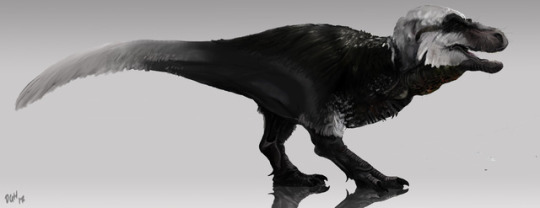

Some Mongolian fauna consisting of “Tarbosaurus bataar” and “Tsaagan mangas”. My Opus magnum when it comes to photoshop and I must admit that I’m really satisfied with the result!
950 notes
·
View notes
Photo
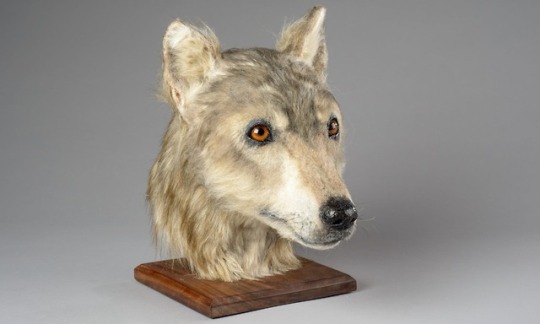
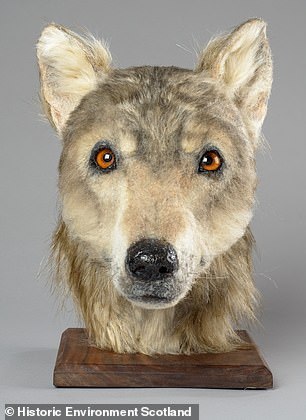
Reconstructed face of a 4,500 year old dog from Orkney- the world’s first canine forensic reconstruction.
This skull was one of 24 excavated from the chambered tomb of Cuween Hill:
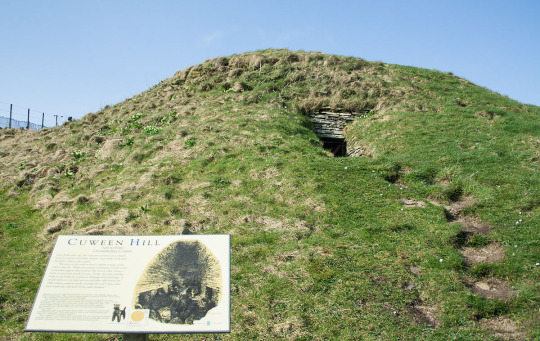

The tomb was used 600 years earlier for the burial of human remains before it was used for dog burials.
193 notes
·
View notes
Photo
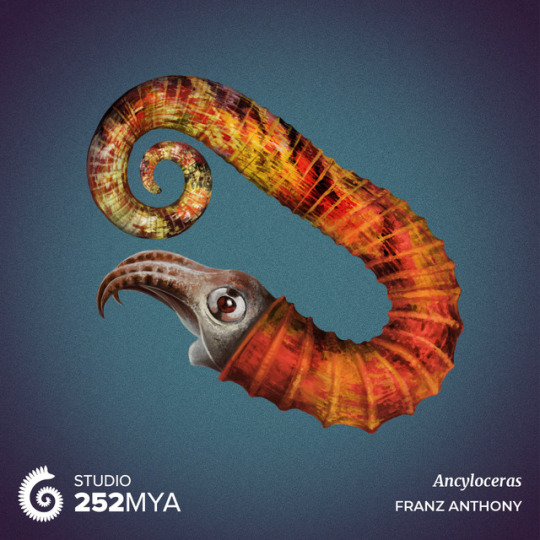
Ancyloceras
Artwork by Franz Anthony / @franzanth
Oddly shaped ammonites like Ancyloceras likely weren’t fast swimmers. Some paleontologists suggested that they might have attached themselves to marine plants like a real paperclip, though this idea isn’t accepted by most.
—
252MYA creates custom-made artwork for private collections and editorial, scientific, or educational project.
260 notes
·
View notes
Photo

A little bit of role reversal. Tenontosaurus eating a Deinonychus, just because it can.
Many “strict herbivores” will sometimes actually eat meat – sometimes for the calcium in bones, but sometimes for no clear reason at all. Modern deer, cows, sheep, elephants and hippos (among others) have all been documented killing and eating smaller animals. There’s a good article about this (with images and videos) over on the old version of the Tetrapod Zoology blog.
Tenontosaurus was an 8m long (26ft) primitive iguanodont from the Early Cretaceous of North America, living about 110 million years ago. Its remains have frequently been found associated with those of Deinonychus, a 3m long (10ft) dromaeosaur.
This has led to a sort of meme in reconstructions, with poor Tenontosaurus almost always shown being attacked and eaten by a pack of Deinonychus as if its entire reason for existence was simply to be raptor chow. The excellent All Yesterdays book features a page spread specifically addressing this stereotype, and calling for more varied depictions of these animals. (There are also problems with the popular concept of pack hunting in dromaeosaurs, but that’s a subject for another time.)
For more herbivorous dinosaurs defying expectations, check out Mark Witton’s discussion of potential omnivory in ceratopsians.
179 notes
·
View notes
Photo
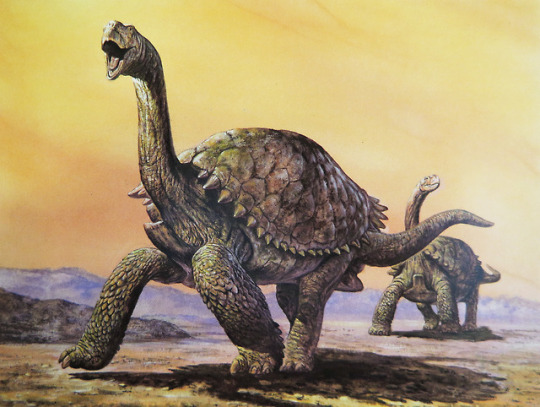
Dinosaur-like giant turtles from a future-evolution scenario.
Source: The Sauropod Dinosaurs: Life in the Age of Giants by Mark Hallett and Matt Wedel. (2016)
www.cmkosemen.com
Image reproduced for non-commercial purposes.
Contact [email protected] for removal.
352 notes
·
View notes
Photo

One of the pics I didnt get to finish before my harddrive died. There was more done than this but I didn’t upload it anywhere.
147 notes
·
View notes
Photo

Final for Koolasuchus cleelandi. In 1978 a jawbone was found in southeastern Australia belonging to a giant amphibian; this in itself was not unusual as amphibians have been found throughout huge swathes of the fossil record, some getting to be downright gigantic among the particular order that this beast belonged to, known as the Temnospondyls.
These creatures were some of the first complex vertebrates to venture on land, doing so as far back as the Carboniferous period and thriving in locations across the Earth throughout the Permian, and into the age of the dinosaurs.
What is interesting is that Koolasuchus was possibly the last of it’s kind, a relic of a bygone era living it’s last days in the Early Cretaceous marking the end of a 210 million year reign. What’s more is that it was an arctic predator, spending it’s time ambushing small dinosaurs and other animals from beneath the bubbling waters of the forest streams that ran through what would later become the region of Victoria, Australia, which was below the Antarctic Circle at the time.
Despite this it’s environment was much more temperate than that of the miles of icy desert found at our southern pole in modern day, while it was cooler by Cretaceous standards, the temperatures had a much warmer global average than they do today.
Koolasuchus cleedandi was officially named in 1997 after paleontologist Lesley Kool (and partially for the “cool” environment it lived in) and geologist Mike Cleeland. Although it has a body similar to that of a modern salamander, it wasn’t exactly a harmless newt, at 16 feet and length and over 1,100 pounds it had a viscous bite and would have been an effective hunter in it’s polar environment, laying in wait like crocodiles do today.
340 notes
·
View notes
Photo

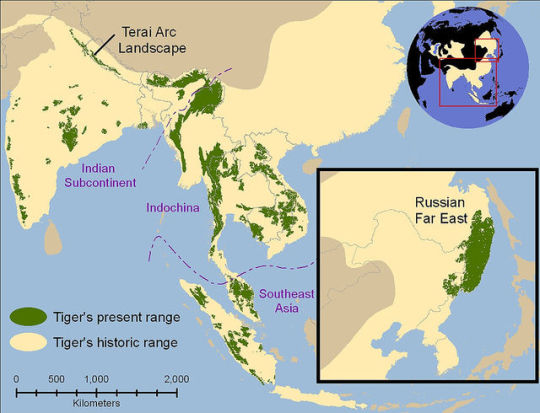
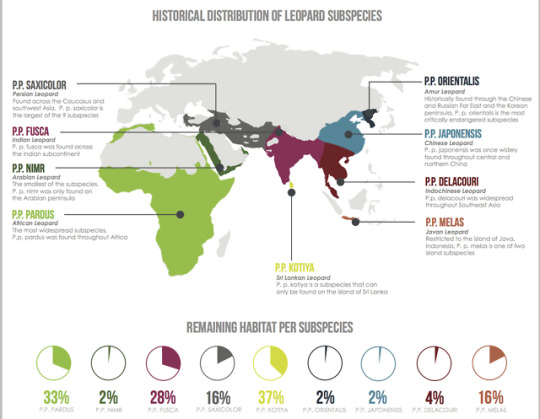
Historic and present range of lion, tiger, and leopard
22 notes
·
View notes
Photo

Believed to be the oldest human-like footprints, left by ancient human relatives 5.6 million years ago [1180x1580]
91 notes
·
View notes
Photo
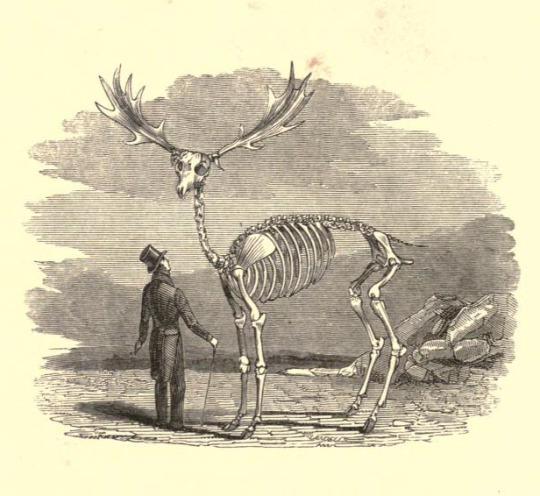
Irish elk. The progress of creation considered with reference to the present condition of the earth. 1846.
616 notes
·
View notes
Photo

A PLEISTOCENE CHRISTMAS (My entry for the @weirdchristmas flash fiction contest)
“What ho, Megatherium,” the wooly rhino cried. “Allow me the pleasure of being the first to offer the compliments of the season!”
“And to you, shaggy gentle,” replied the sloth, lifting its short trunk to toot a carol.
And so, the party began. Mammoth danced with Irish elk; elasmotheres locked arms with mylodons. The glacial ice was slick and thick—it never gave way, even under the skating megafauna’s weight. Their songs were jaunty and sugary, trumpeted and roared, with manger-baby verses and ho-ho-ho refrains. Yet, the Pleistocene beasts knew not the yuletide firsthand, only that it awaited future generations.
“How curiously merry it is,” the mastodon grinned, “to celebrate a holiday yet to come!”
“Would that I could see it,” the Megatherium moaned. “But alas, each of our species will be extinct when Christmas finally arrives.”
“A monstrous pity,” chimed the mammoth. “Makes one wistful, eh, hippopotamus?”
The hippo continued to dance and sing, pretending not to hear the question.
277 notes
·
View notes
